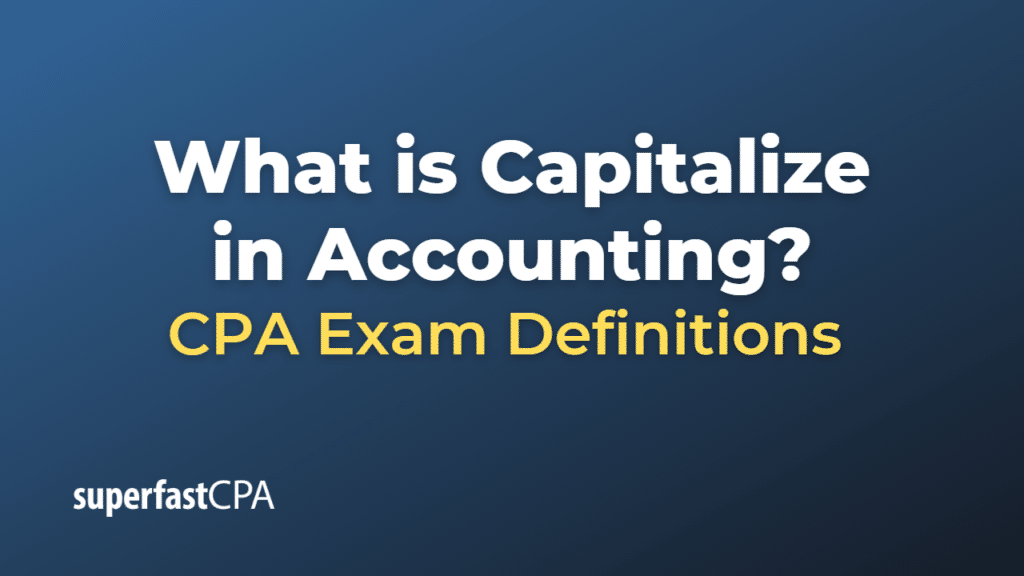Capitalize
In accounting, to capitalize means to record an expenditure as a long-term asset on the balance sheet rather than recognizing it as an immediate expense on the income statement. This process is done for assets that provide economic benefits to the company over an extended period of time, typically more than one accounting period or one fiscal year.
Capitalizing an asset allows a company to spread the cost of the asset over its useful life, matching the cost with the revenues generated by the asset. This is done using depreciation (for tangible assets, such as machinery or buildings) or amortization (for intangible assets, such as patents or copyrights).
When an expenditure is capitalized, it’s considered an investment in the company’s future operations, as it’s expected to contribute to generating revenue over multiple accounting periods. Capitalizing assets can provide a more accurate representation of a company’s financial performance and a better understanding of the value of its long-term investments.
Examples of expenditures that are typically capitalized include:
- Purchasing property, plant, and equipment (PPE).
- Acquiring intangible assets, such as patents, copyrights, or trademarks.
- Costs related to the development of internally generated software or other intellectual property.
- Interest expenses incurred during the construction of a long-term asset, like a building or a manufacturing plant.
It’s important to note that not all expenditures can or should be capitalized. Operating expenses like salaries, rent, utilities, and other day-to-day expenses should be recognized as expenses on the income statement in the period they are incurred, as they don’t provide long-term economic benefits to the company.
Example of Capitalize
Let’s consider a fictional company, “TechGuru Inc.,” that purchases a new server system for its data center. The server system costs $120,000 and has an estimated useful life of 5 years with a salvage value of $20,000. In this case, TechGuru Inc. will capitalize the server system as a long-term asset on the balance sheet.
Instead of recording the entire cost of $120,000 as an expense in the year of purchase, TechGuru Inc. will capitalize the server system and depreciate it over its 5-year useful life. To calculate the annual depreciation expense, the company will use the straight-line depreciation method:
Depreciation Expense = (Cost – Salvage Value) / Useful Life = ($120,000 – $20,000) / 5 = $20,000
Each year, TechGuru Inc. will record a depreciation expense of $20,000 on the income statement. This will reduce the carrying value of the server system on the balance sheet by the same amount. At the end of the 5-year period, the server system’s carrying value on the balance sheet will be equal to its salvage value of $20,000.
By capitalizing the server system, TechGuru Inc. is able to match the cost of the asset with the revenues it generates over time, providing a more accurate representation of the company’s financial performance. The decision to capitalize the server system also allows the company to better track and manage its long-term investments in assets that provide economic benefits over an extended period.













